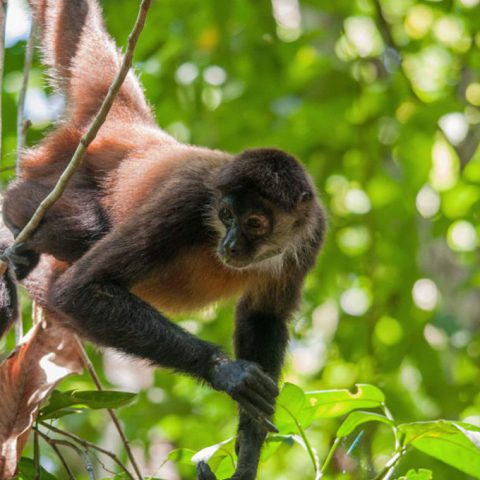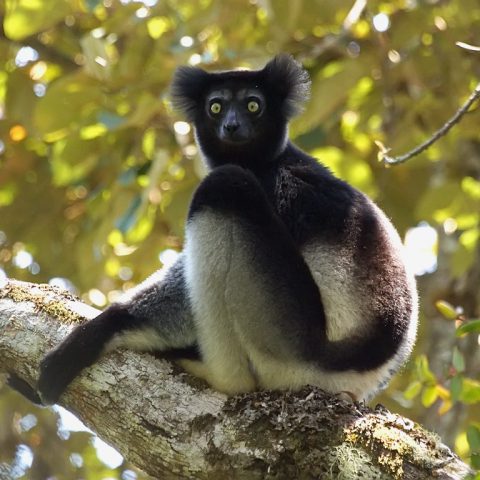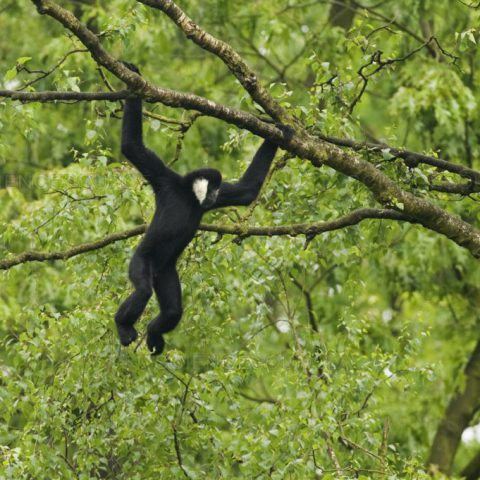Sumatran Tiger
![]() Critically Endangered
Critically Endangered
Population
Fewer than 400 are estimated to remain
Size
2.1 – 2.5 metres long
Weight
75 – 140kg
Countries
Indonesia
Distribution
The current wild population of the Sumatran Tiger is currently estimated below 400 individuals. There is a captive population of around 235 animals within zoos throughout the world.
Sumatran Tigers are known to be present in around 27 different habitat patches throughout the island of Sumatra, Indonesia. The main places being:
- Bukit Barisan Selatan National Park on the southeastern tip of Lampung Province
- Gunung Leuser National Park in Aceh Province (estimated to be 110 – 180 tigers)
- Kerinci Seblat National Park, Central Sumatra (estimated to be 165 – 190 tigers)
Description
The Sumatran Tiger is the smallest tiger species in the world with adult male Tigers rarely reaching 2.5 metres in length and rarely getting bigger than around 140 kilograms.
This beautiful cat has narrow black stripes which can end in dots on their orange to almost a dark red coat which makes the Sumatran Tiger also the darkest colour of tiger species.
Other features of a Sumatran Tiger include:
- Longer whiskers to help aid the animal in improving its senses
- Extra fur around its face. The belief is that this helps protect the animal in dense vegetation
- White spots on the back of their ears. These are supposedly to help visually enlarge the size of the animal and pretend to be a set of ‘false eyes’ for younger Tigers staving off other predators
- Webbed toes to aid the animals ability to swim through rivers
- Claws to grip prey and even allow Tigers to climb trees



Quick Facts
- Sumatran Tigers are solitary animals and are generally only found together during mating season or when a female tiger is raising her cubs
- Male Tigers are very territorial and will not allow other male Tigers to settle in their range. They will allow other Tigers to sometimes cross their territory
- Female Tigers are not territorial like males
- The Sumatran Tiger is not a man eater, however can attack humans
- Tigers do not like to fight, it is very rare for them to do so
- Sumatran Tigers face a high mortality rate especially amongst young Tigers
- Wild Tigers live for around 15 years, while Tigers in captivity will live for around 25 years
- Tigers can be found in water and can swim across rivers
- Tigers have also demonstrated the ability to climb when necessary
It is interesting to note that in about 90% of cases, a Sumatran Tiger will fail to catch their prey.
The prey which Sumatran Tigers hunt include:
- Great Argus Pheasant
- Pigtail Macaque
- Porcupine
- Malay Tapir
- Wild Pig
- Greater and Lesser Mouse-deer
- Muntjac
- Sambar deer
Tigers need an abundance of prey: A single tiger can eat up to 88 pounds of meat at one time.
As Sumatran Tigers are apex predators in their habitat, the continuing decline in their population numbers is likely to destabilise food chains and lead to various ecosystem changes when these prey species experience a release from predation pressure and increase in numbers.
The Sumatran Tiger exists mostly in isolated populations throughout the island of Sumatra, which leads to them being found in a wide range of habitats;
- Coastal lowland forest at sea level (Bukit Barisan Selatan National Park)
- Mountain forests up to 3,200m (Gunung Leuser National Park)
- Tropical Rainforests
Tigers habitat preference is for forests, in particular areas with high elevation, low annual rainfall and towards the forests centre.
Areas with dense undergrowth which are steep is prime tiger country and is definitely a need for the tiger.
Tigers do not tend to like areas where humans are encroaching. However Tigers have been known to be found in acacia plantations, around older plants with more cover and near water, but Tigers forays in plantations (particularly rubber and palm oil) are very rare.
The greatest threats to the existence of the Sumatran Tiger is that of humans. Resulting issues include:
- Habitat Loss – logging, agriculture development (in particular palm oil plantations)
- Poaching – illegal trade of tiger products, farmers
- Tigers encountering humans and being killed in response to attacks on livestock and humans
Tigers require large areas of forest to survive, so any encroachment into the Tigers range can have damaging effects, especially with logging and plantations replacing the forest habitat. Within Sumatra there is becoming less and less areas which have not be encroached on by humans, causing Tiger habitats to become highly fragmented.
Conservation Efforts
Wildlife Warriors
Wildlife Warriors are fighting to increase the population of Tigers. Since having Tigers at Australia Zoo in 2003, they have raised and donated over 1.5 million dollars to support tiger conservation in South East Asia.
Australia Zoo Wildlife Warriors is leading the way in tiger conservation, helping to fund and train anti-poaching patrol units (TPCU) working in partnership with Fauna & Flora International (FFI) in Kerinci Seblat National Park, Sumatra.
The TPCU program is made up of 6 units who work patrolling the forest where they act as a deterrent for poachers and people illegally encroaching into the Tigers’ habitat. They also remove hundreds of snares each year and help local communities mitigate conflict with wildlife. This program is now widely recognised as the most successful tiger conservation law enforcement program in South East Asia.
Wildlife Warriors works to combat the three main contributing factors to the decline in tiger populations: habitat destruction, poaching for traditional Chinese medicines and the rise in conflict caused by the destruction of habitat and natural prey.
Fauna & Flora
Fauna & Flora International (FFI) has been conserving Tigers and other threatened wildlife in Sumatra for over 20 years.
FFI work in the three major landscapes of Kerinci Seblat National Park, Aceh and Riau. In combination, these forests contain more than 60% of all wild Sumatran Tigers.
Encouragingly, in many places where the FFI-supported forest rangers have focused their efforts, Tigers are no longer declining, but are now breeding, as witnessed through recurrent records of tiger cubs.
Techniques used by FFI conservation include:
Robust law enforcement
FFI has trained more than 500 dedicated National Park and community forest rangers who conduct anti-poaching forest patrols. These teams have removed more than 5,500 tiger/prey snare traps.
They have also created an informant network which has been key in arresting tiger poachers and traders which has led to over 30 arrests. On top of this a local network has been setup to counter illegal logging which has lead to over 100 arrests as well.
Human-tiger conflict mitigation
FFI has established rapid response units that have responded to over 150 incidents of human-tiger conflict and undoubtedly prevented many unnecessary killings and captures of wild tigers.
On occasion, Tigers are caught in snare traps and FFI rapidly mobilises veterinary support to care for the tiger.
Population monitoring
To assess the impact of the conservation management intervention by FFI and partners, FFI set remotely activated camera traps in the forest to obtain information on tiger population trends.







